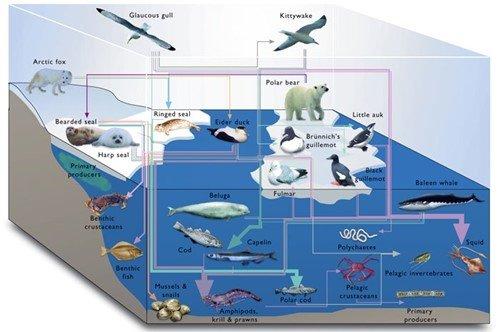What are 5 examples of biodiversity?
 Biodiversity, the intricate mosaic of life that populates our planet, forms the foundation of its ecosystems and the web of life itself. The dazzling variety of species, habitats, and genetic diversity collectively contribute to the resilience and sustainability of Earth's biosphere. In this article, we embark on a journey to discover five captivating and diverse examples that vividly illustrate the significance of biodiversity.
Biodiversity, the intricate mosaic of life that populates our planet, forms the foundation of its ecosystems and the web of life itself. The dazzling variety of species, habitats, and genetic diversity collectively contribute to the resilience and sustainability of Earth's biosphere. In this article, we embark on a journey to discover five captivating and diverse examples that vividly illustrate the significance of biodiversity.
1. Coral Reefs:
Hidden beneath the shimmering waves, coral reefs are veritable underwater wonderlands that harbor an unparalleled profusion of marine life. The remarkable synergy between corals and photosynthetic algae generates entire ecosystems that support an astonishing spectrum of species. From the darting movements of brilliantly hued fish to the delicate, swaying branches of sea fans, coral reefs epitomize the intricate interdependence that characterizes biodiversity.2. Tropical Rainforests:
The lush canopies of tropical rainforests teem with life, offering a breathtaking display of biodiversity. These vibrant ecosystems are home to an estimated 50% of the world's species, despite covering only 6% of the Earth's land surface. From the resounding calls of howler monkeys to the hidden lives of insects, each layer of the rainforest unfolds as a distinct habitat, showcasing a remarkable variety of life forms.3. Galápagos Islands:
The Galápagos Islands, located in the Pacific Ocean, serve as a living laboratory of evolution and adaptation. The unique isolation of these volcanic islands inspired Charles Darwin's groundbreaking theories. From the lumbering Galápagos giant tortoises with their distinct shell shapes to the marine iguanas that venture into the ocean to feed, the islands encapsulate the processes of natural selection and speciation.4. Madagascar's Lemurs:
Nestled off the eastern coast of Africa, Madagascar's isolation has given rise to an array of unique species found nowhere else on Earth. Among these, lemurs stand out as charismatic representatives. These primates exhibit diverse adaptations, from the sifaka's graceful leaping through trees to the mouse lemur's diminutive size. Their existence underscores the fragility of island ecosystems and the urgent need for conservation.5. The Great Barrier Reef:
Australia's Great Barrier Reef is a breathtaking testament to marine biodiversity. Stretching over 2,300 kilometers, it boasts an intricate tapestry of coral formations that provide habitat to an extraordinary range of marine life. From the majestic movements of graceful manta rays to the stealthy patrols of reef sharks, the reef showcases the splendor and intricacy of underwater ecosystems.Conclusion:
Biodiversity forms the heart of our planet's vitality, weaving together species, ecosystems, and genetic diversity in an intricate dance of life. The examples explored in this article offer mere glimpses into the awe-inspiring array of life that colors Earth's canvas. Preserving and nurturing this biodiversity is not only a responsibility but a necessity to ensure the sustainability of our planet and the survival of countless species, including our own.
Advertise on APSense
This advertising space is available.
Post Your Ad Here
Post Your Ad Here
Comments